Analysis of Innovation and Enterprise at Marks and Spencer
VerifiedAdded on 2022/11/30
|13
|1264
|82
Presentation
AI Summary
This presentation provides a comprehensive analysis of innovation processes at Marks and Spencer, a British retail company. It begins with an introduction emphasizing the importance of effective innovation procedures for business survival. The presentation then delves into a detailed analysis of Marks and Spencer's innovation processes, breaking them down into stages such as brainstorming and mobilization of ideas, experimentation, and commercialization. Furthermore, the presentation incorporates Gibb's reflective cycle to reflect on personal innovative practices, including emotions, observations, and analysis of strengths and weaknesses. The author identifies creativity as a key skill gap and outlines an action plan to enhance it. The conclusion reinforces the necessity of innovation for company growth and highlights the importance of a systematic approach. The presentation includes references to support the analysis.
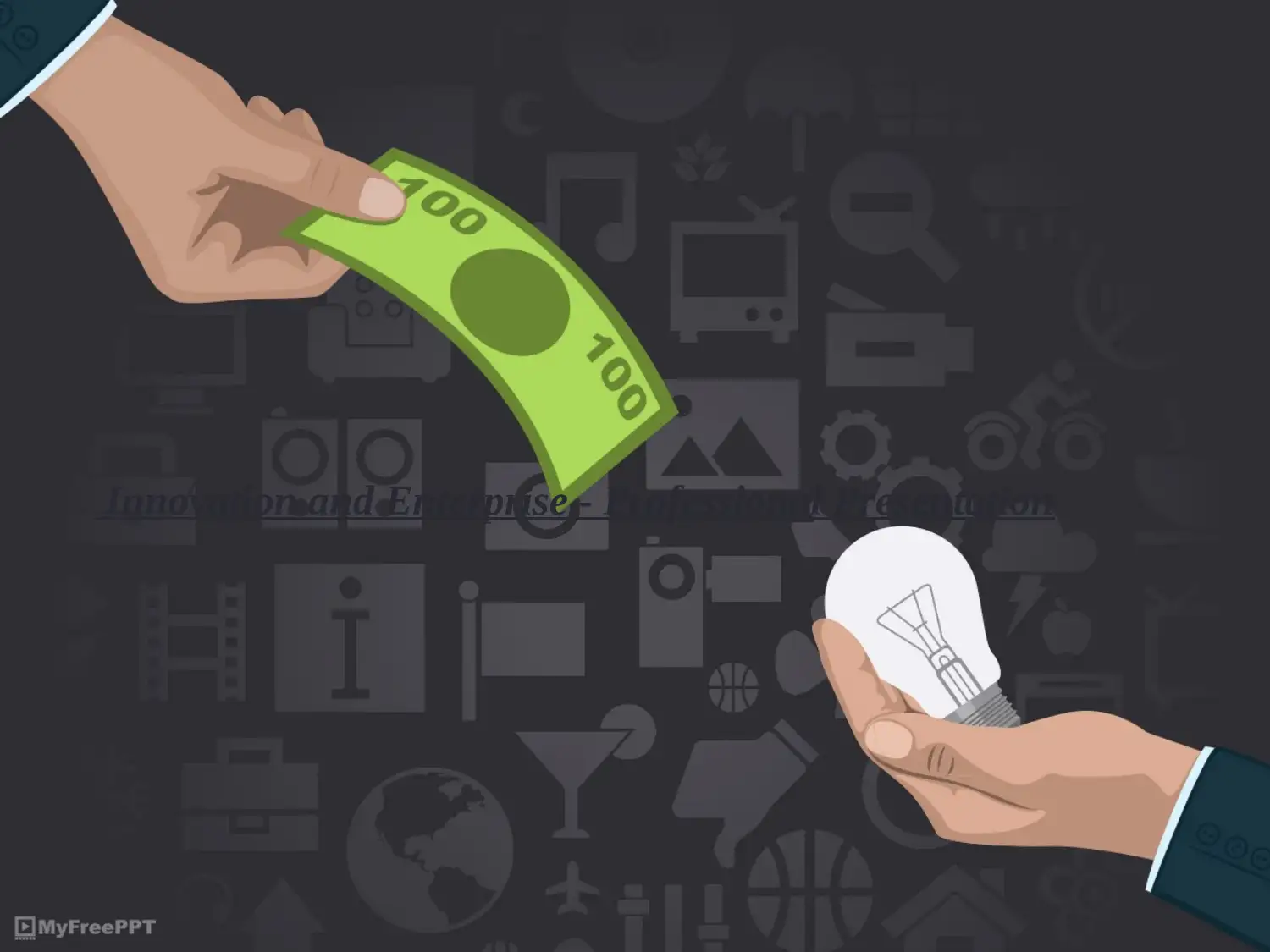
Innovation and Enterprise - Professional Presentation
Paraphrase This Document
Need a fresh take? Get an instant paraphrase of this document with our AI Paraphraser
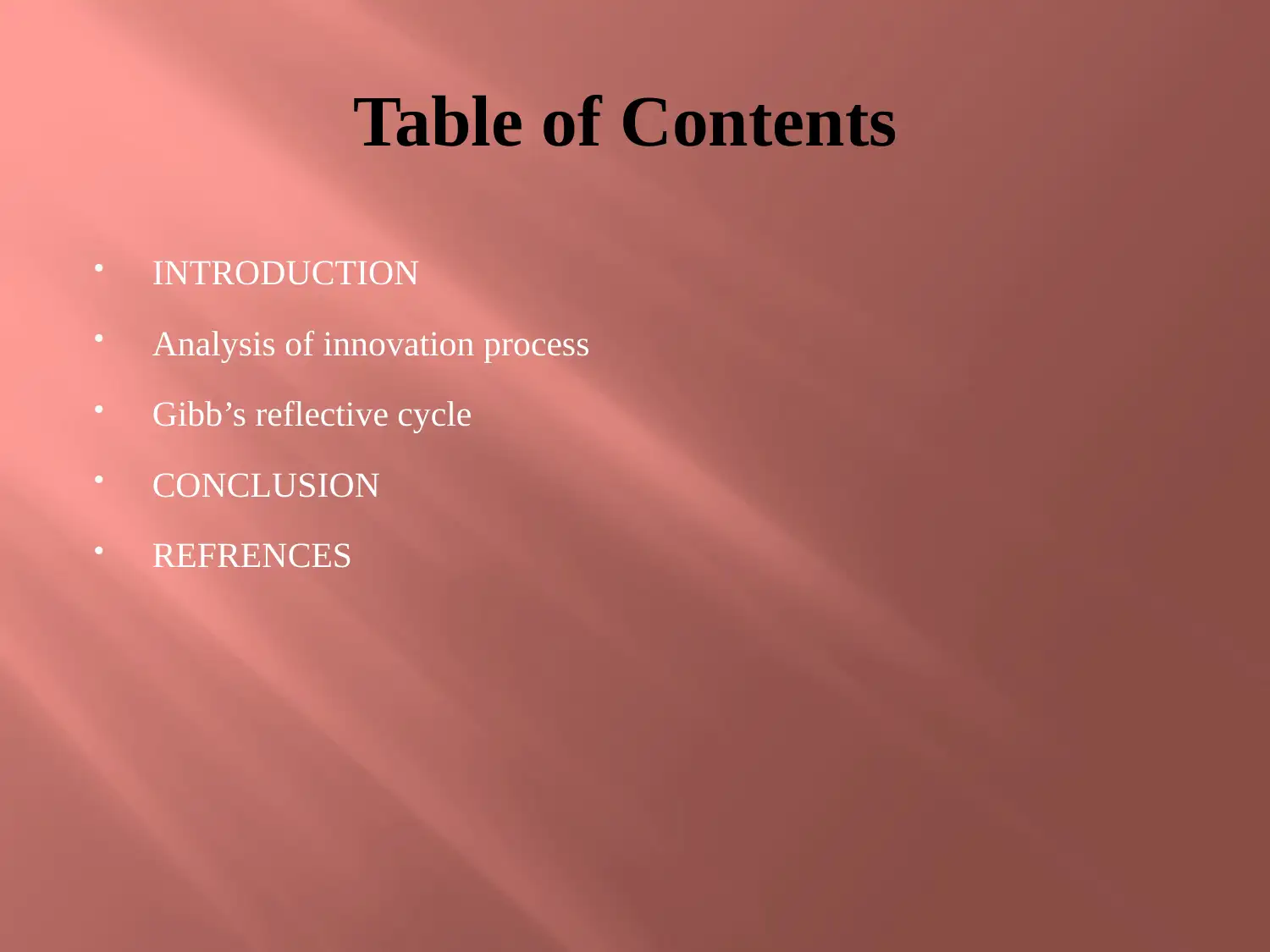
Table of Contents
INTRODUCTION
Analysis of innovation process
Gibb’s reflective cycle
CONCLUSION
REFRENCES
INTRODUCTION
Analysis of innovation process
Gibb’s reflective cycle
CONCLUSION
REFRENCES
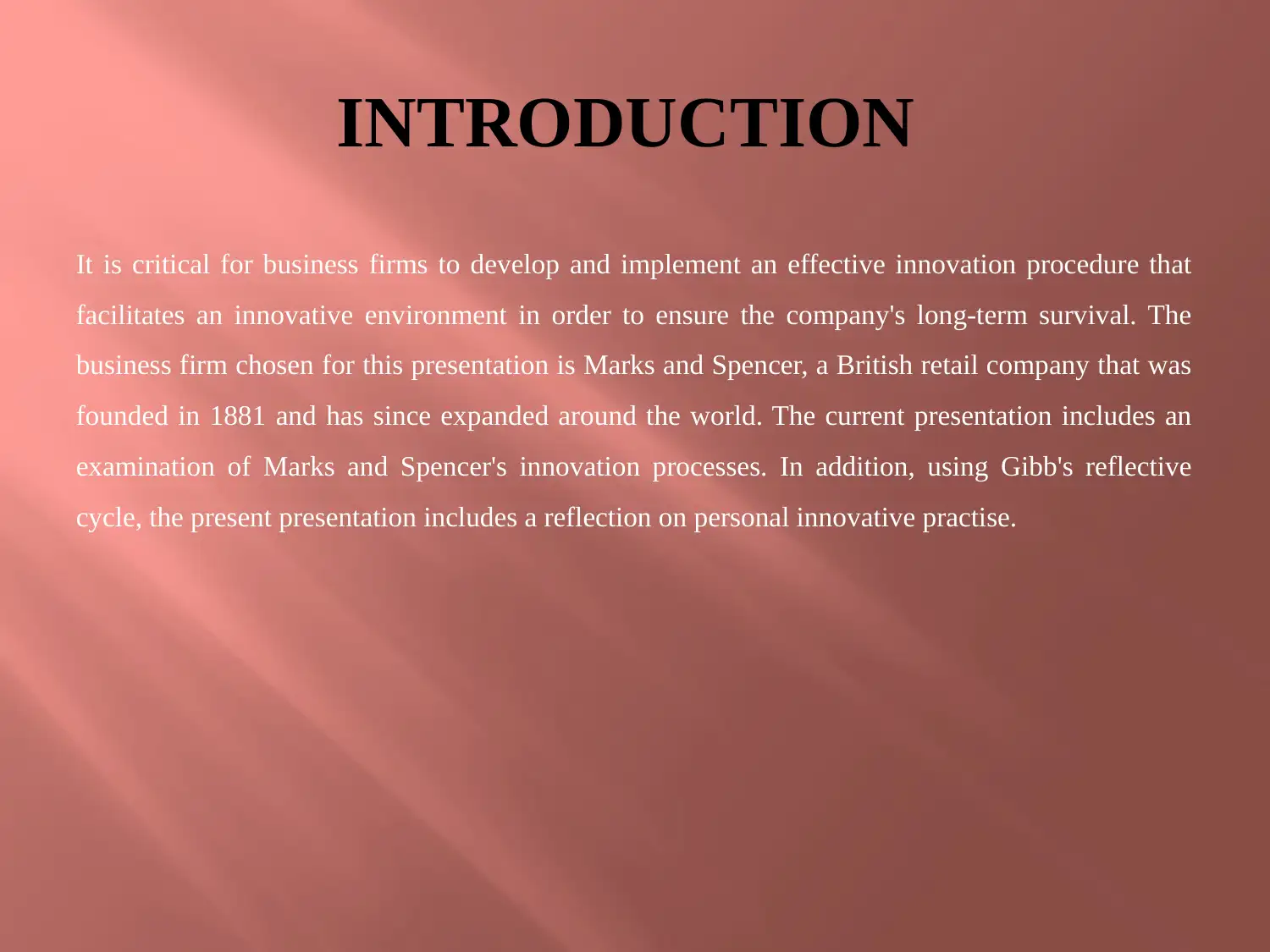
INTRODUCTION
It is critical for business firms to develop and implement an effective innovation procedure that
facilitates an innovative environment in order to ensure the company's long-term survival. The
business firm chosen for this presentation is Marks and Spencer, a British retail company that was
founded in 1881 and has since expanded around the world. The current presentation includes an
examination of Marks and Spencer's innovation processes. In addition, using Gibb's reflective
cycle, the present presentation includes a reflection on personal innovative practise.
It is critical for business firms to develop and implement an effective innovation procedure that
facilitates an innovative environment in order to ensure the company's long-term survival. The
business firm chosen for this presentation is Marks and Spencer, a British retail company that was
founded in 1881 and has since expanded around the world. The current presentation includes an
examination of Marks and Spencer's innovation processes. In addition, using Gibb's reflective
cycle, the present presentation includes a reflection on personal innovative practise.
⊘ This is a preview!⊘
Do you want full access?
Subscribe today to unlock all pages.

Trusted by 1+ million students worldwide
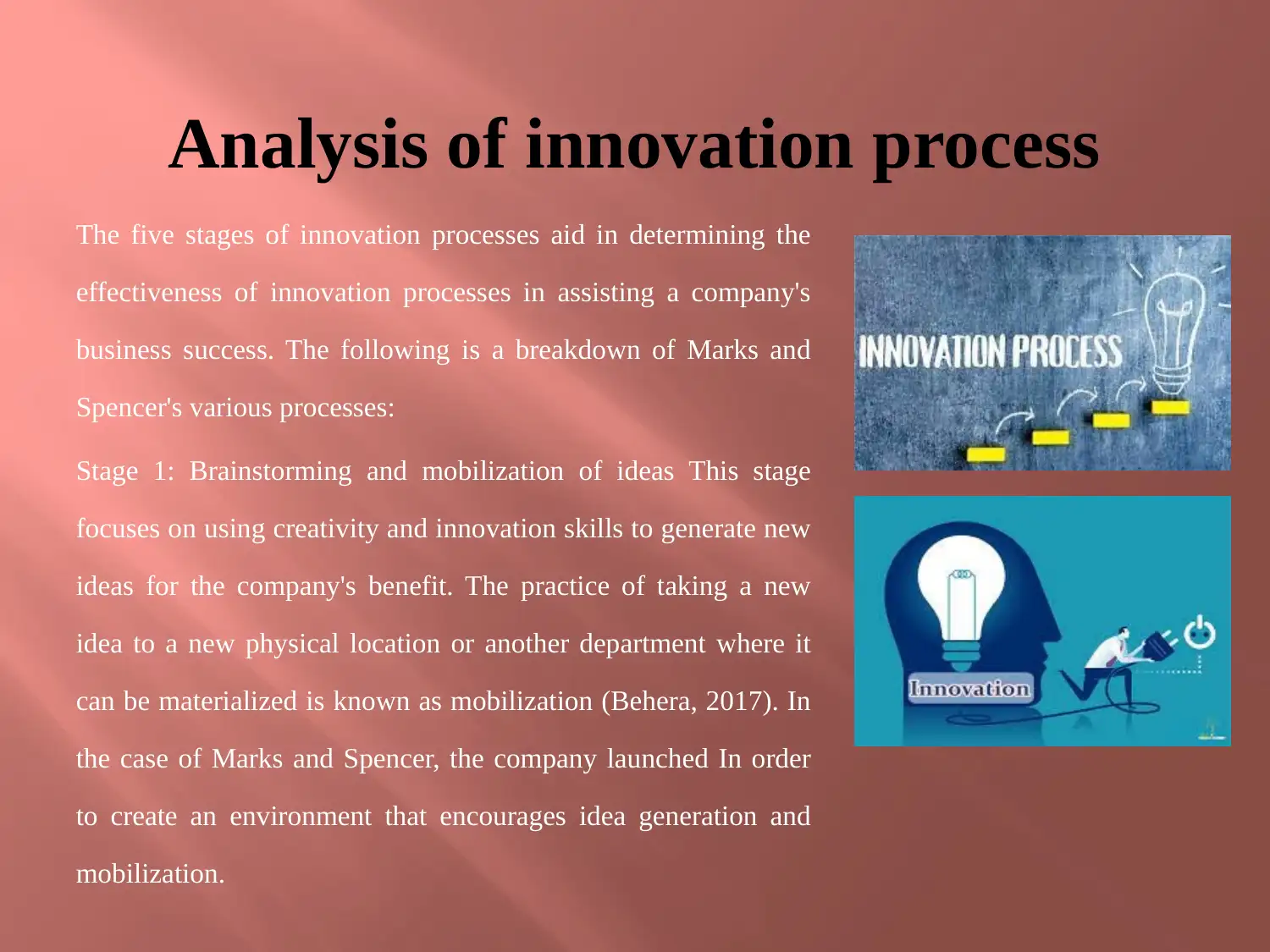
Analysis of innovation process
The five stages of innovation processes aid in determining the
effectiveness of innovation processes in assisting a company's
business success. The following is a breakdown of Marks and
Spencer's various processes:
Stage 1: Brainstorming and mobilization of ideas This stage
focuses on using creativity and innovation skills to generate new
ideas for the company's benefit. The practice of taking a new
idea to a new physical location or another department where it
can be materialized is known as mobilization (Behera, 2017). In
the case of Marks and Spencer, the company launched In order
to create an environment that encourages idea generation and
mobilization.
The five stages of innovation processes aid in determining the
effectiveness of innovation processes in assisting a company's
business success. The following is a breakdown of Marks and
Spencer's various processes:
Stage 1: Brainstorming and mobilization of ideas This stage
focuses on using creativity and innovation skills to generate new
ideas for the company's benefit. The practice of taking a new
idea to a new physical location or another department where it
can be materialized is known as mobilization (Behera, 2017). In
the case of Marks and Spencer, the company launched In order
to create an environment that encourages idea generation and
mobilization.
Paraphrase This Document
Need a fresh take? Get an instant paraphrase of this document with our AI Paraphraser
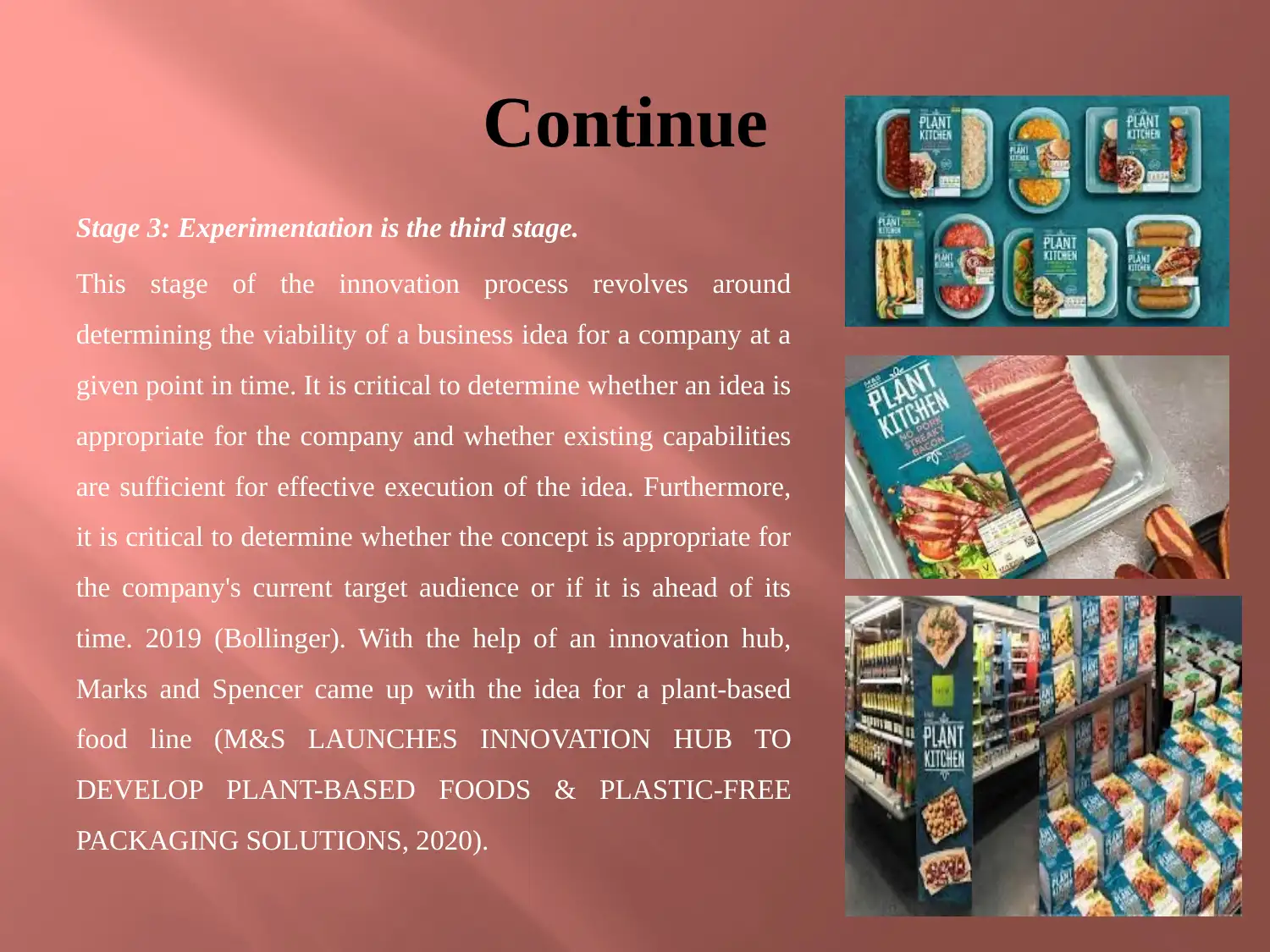
Continue
Stage 3: Experimentation is the third stage.
This stage of the innovation process revolves around
determining the viability of a business idea for a company at a
given point in time. It is critical to determine whether an idea is
appropriate for the company and whether existing capabilities
are sufficient for effective execution of the idea. Furthermore,
it is critical to determine whether the concept is appropriate for
the company's current target audience or if it is ahead of its
time. 2019 (Bollinger). With the help of an innovation hub,
Marks and Spencer came up with the idea for a plant-based
food line (M&S LAUNCHES INNOVATION HUB TO
DEVELOP PLANT-BASED FOODS & PLASTIC-FREE
PACKAGING SOLUTIONS, 2020).
Stage 3: Experimentation is the third stage.
This stage of the innovation process revolves around
determining the viability of a business idea for a company at a
given point in time. It is critical to determine whether an idea is
appropriate for the company and whether existing capabilities
are sufficient for effective execution of the idea. Furthermore,
it is critical to determine whether the concept is appropriate for
the company's current target audience or if it is ahead of its
time. 2019 (Bollinger). With the help of an innovation hub,
Marks and Spencer came up with the idea for a plant-based
food line (M&S LAUNCHES INNOVATION HUB TO
DEVELOP PLANT-BASED FOODS & PLASTIC-FREE
PACKAGING SOLUTIONS, 2020).
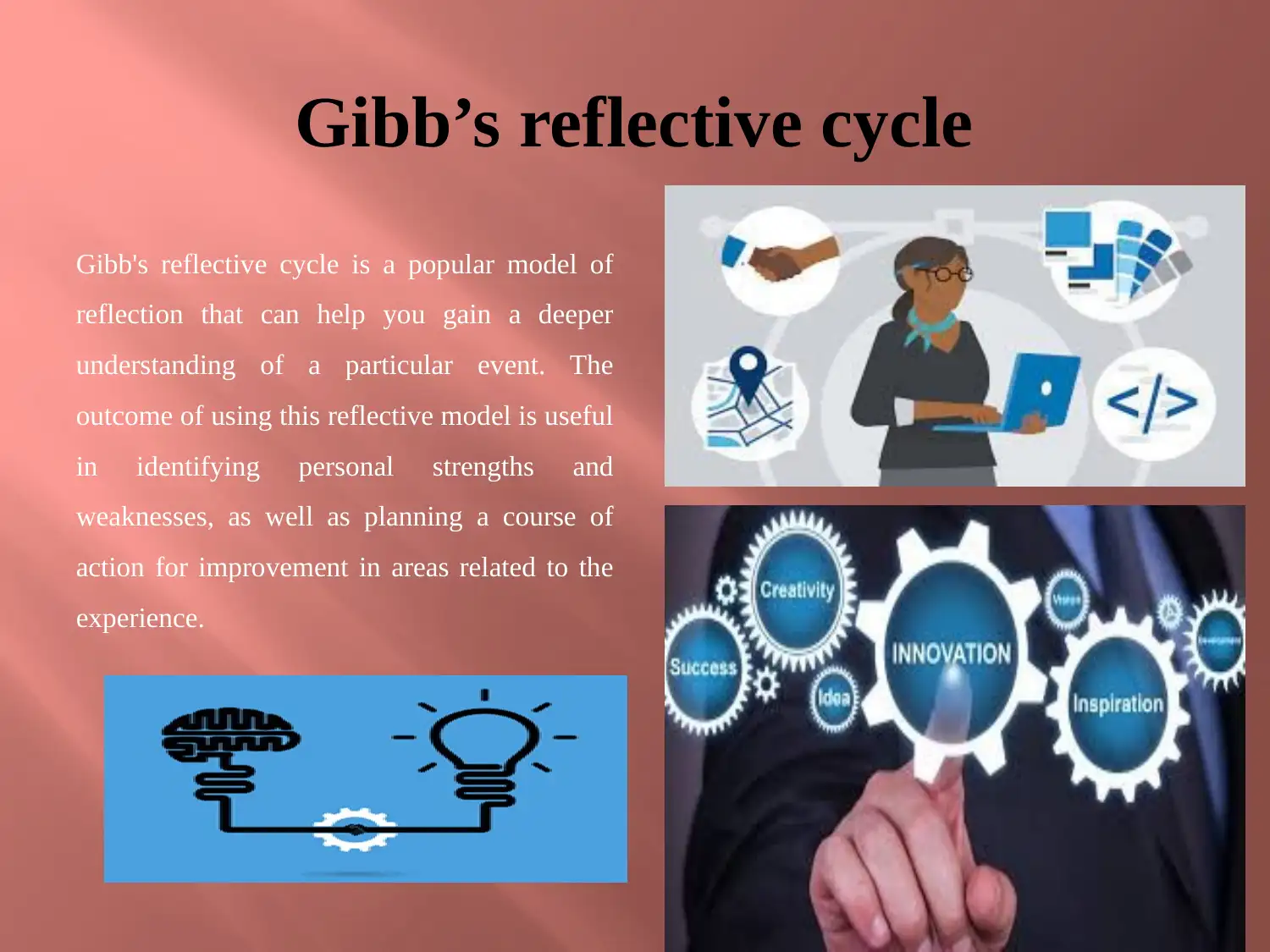
Gibb’s reflective cycle
Gibb's reflective cycle is a popular model of
reflection that can help you gain a deeper
understanding of a particular event. The
outcome of using this reflective model is useful
in identifying personal strengths and
weaknesses, as well as planning a course of
action for improvement in areas related to the
experience.
Gibb's reflective cycle is a popular model of
reflection that can help you gain a deeper
understanding of a particular event. The
outcome of using this reflective model is useful
in identifying personal strengths and
weaknesses, as well as planning a course of
action for improvement in areas related to the
experience.
⊘ This is a preview!⊘
Do you want full access?
Subscribe today to unlock all pages.

Trusted by 1+ million students worldwide
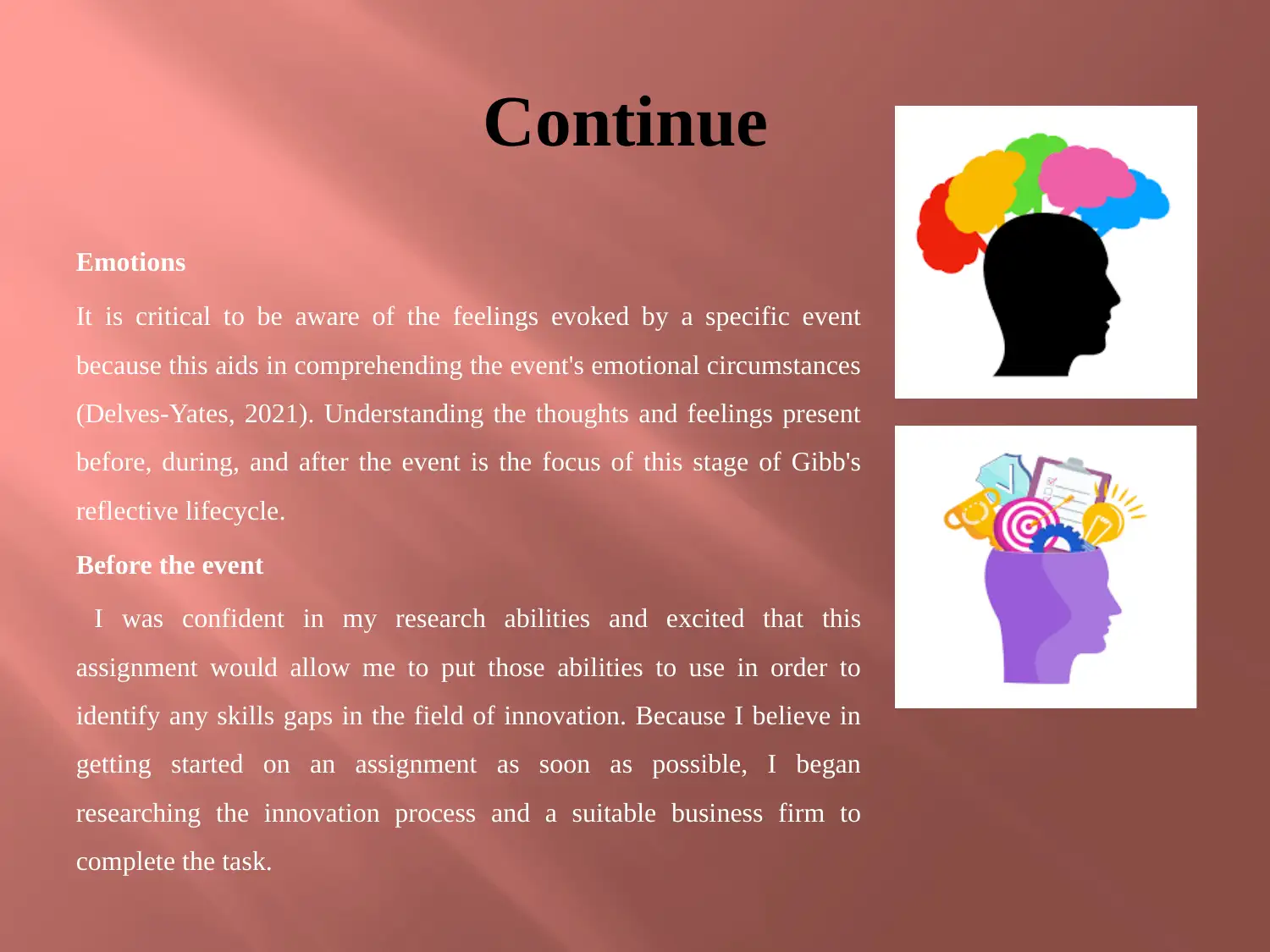
Continue
Emotions
It is critical to be aware of the feelings evoked by a specific event
because this aids in comprehending the event's emotional circumstances
(Delves-Yates, 2021). Understanding the thoughts and feelings present
before, during, and after the event is the focus of this stage of Gibb's
reflective lifecycle.
Before the event
I was confident in my research abilities and excited that this
assignment would allow me to put those abilities to use in order to
identify any skills gaps in the field of innovation. Because I believe in
getting started on an assignment as soon as possible, I began
researching the innovation process and a suitable business firm to
complete the task.
Emotions
It is critical to be aware of the feelings evoked by a specific event
because this aids in comprehending the event's emotional circumstances
(Delves-Yates, 2021). Understanding the thoughts and feelings present
before, during, and after the event is the focus of this stage of Gibb's
reflective lifecycle.
Before the event
I was confident in my research abilities and excited that this
assignment would allow me to put those abilities to use in order to
identify any skills gaps in the field of innovation. Because I believe in
getting started on an assignment as soon as possible, I began
researching the innovation process and a suitable business firm to
complete the task.
Paraphrase This Document
Need a fresh take? Get an instant paraphrase of this document with our AI Paraphraser
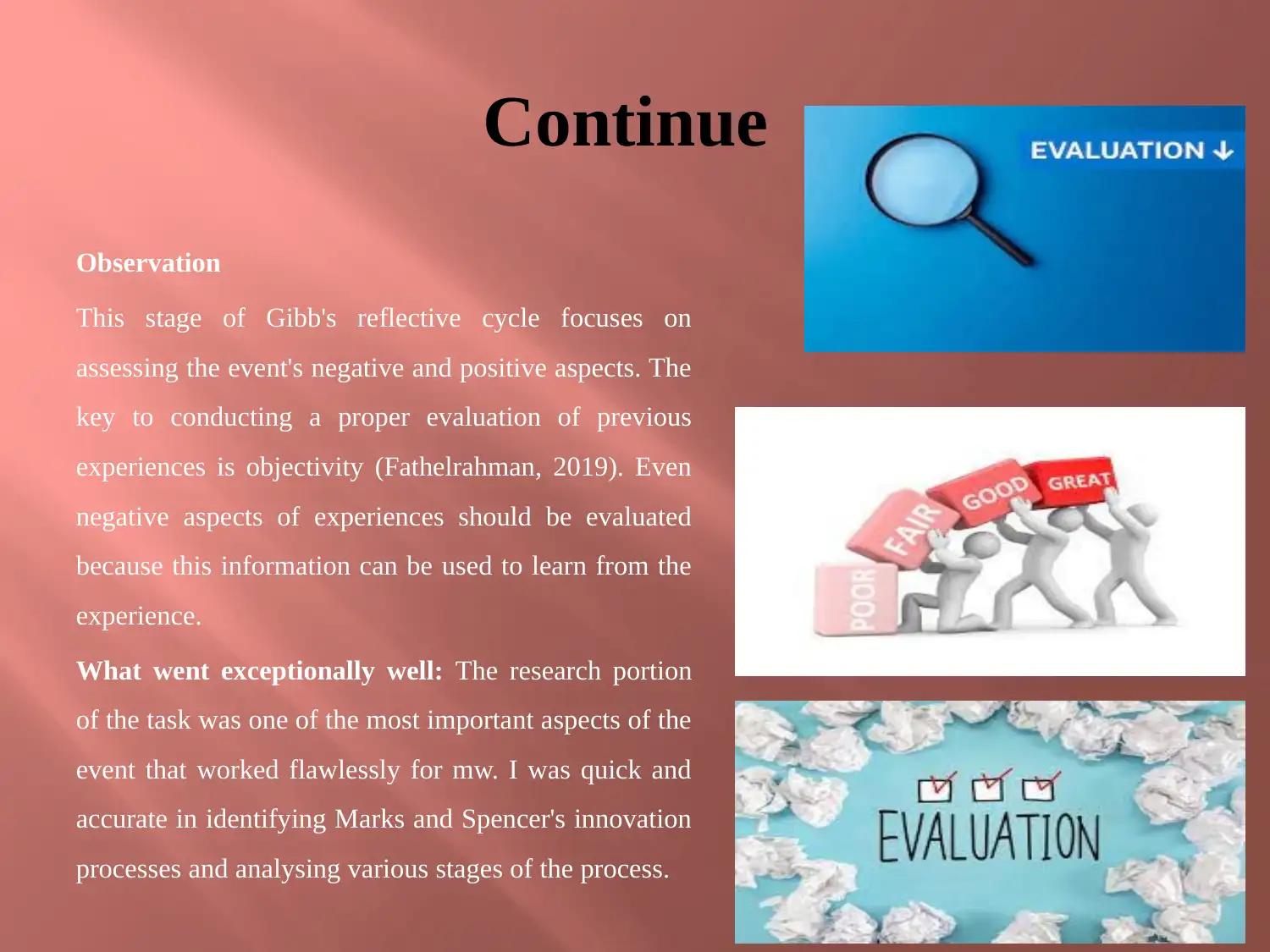
Continue
Observation
This stage of Gibb's reflective cycle focuses on
assessing the event's negative and positive aspects. The
key to conducting a proper evaluation of previous
experiences is objectivity (Fathelrahman, 2019). Even
negative aspects of experiences should be evaluated
because this information can be used to learn from the
experience.
What went exceptionally well: The research portion
of the task was one of the most important aspects of the
event that worked flawlessly for mw. I was quick and
accurate in identifying Marks and Spencer's innovation
processes and analysing various stages of the process.
Observation
This stage of Gibb's reflective cycle focuses on
assessing the event's negative and positive aspects. The
key to conducting a proper evaluation of previous
experiences is objectivity (Fathelrahman, 2019). Even
negative aspects of experiences should be evaluated
because this information can be used to learn from the
experience.
What went exceptionally well: The research portion
of the task was one of the most important aspects of the
event that worked flawlessly for mw. I was quick and
accurate in identifying Marks and Spencer's innovation
processes and analysing various stages of the process.
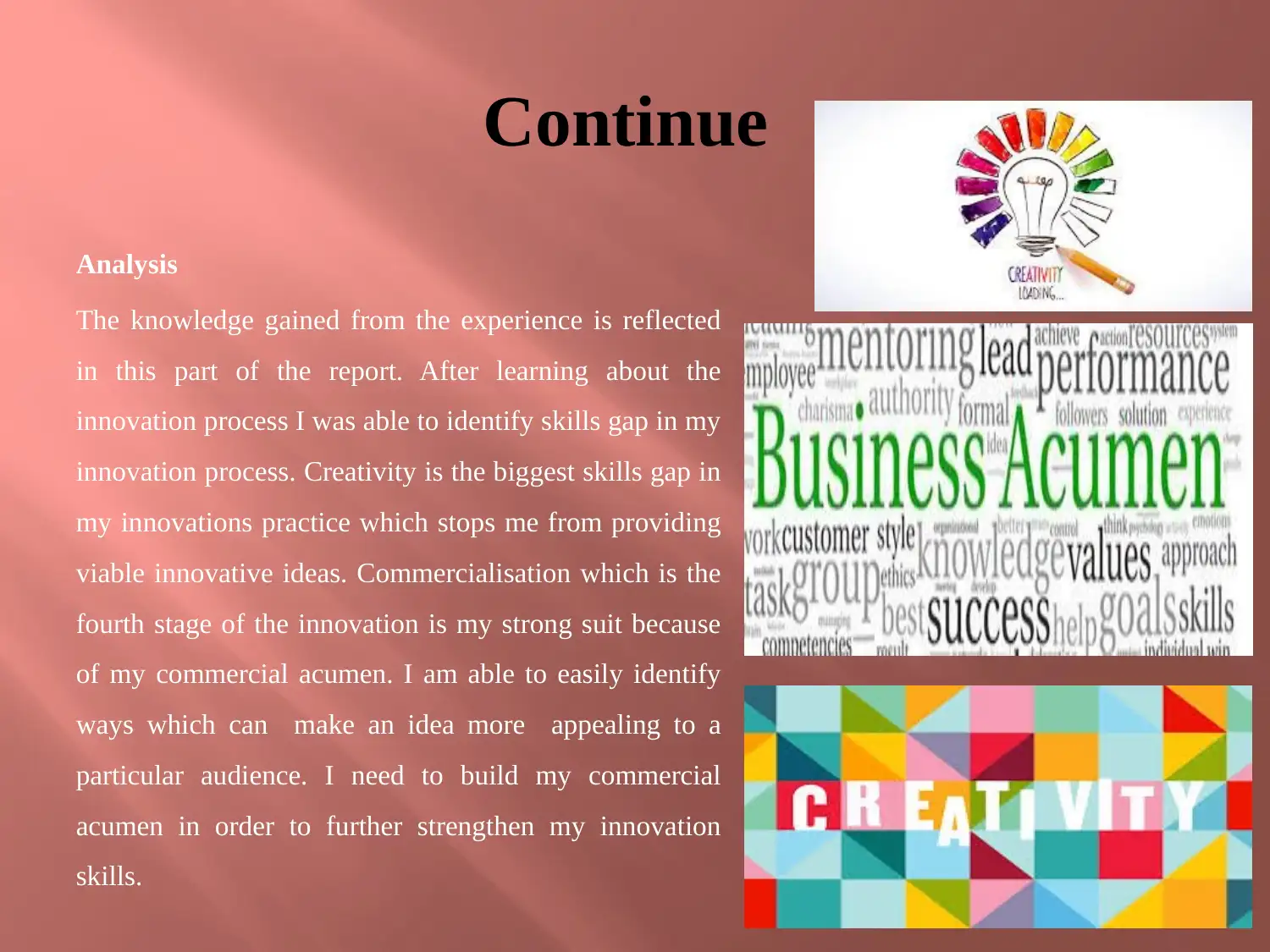
Continue
Analysis
The knowledge gained from the experience is reflected
in this part of the report. After learning about the
innovation process I was able to identify skills gap in my
innovation process. Creativity is the biggest skills gap in
my innovations practice which stops me from providing
viable innovative ideas. Commercialisation which is the
fourth stage of the innovation is my strong suit because
of my commercial acumen. I am able to easily identify
ways which can make an idea more appealing to a
particular audience. I need to build my commercial
acumen in order to further strengthen my innovation
skills.
Analysis
The knowledge gained from the experience is reflected
in this part of the report. After learning about the
innovation process I was able to identify skills gap in my
innovation process. Creativity is the biggest skills gap in
my innovations practice which stops me from providing
viable innovative ideas. Commercialisation which is the
fourth stage of the innovation is my strong suit because
of my commercial acumen. I am able to easily identify
ways which can make an idea more appealing to a
particular audience. I need to build my commercial
acumen in order to further strengthen my innovation
skills.
⊘ This is a preview!⊘
Do you want full access?
Subscribe today to unlock all pages.

Trusted by 1+ million students worldwide
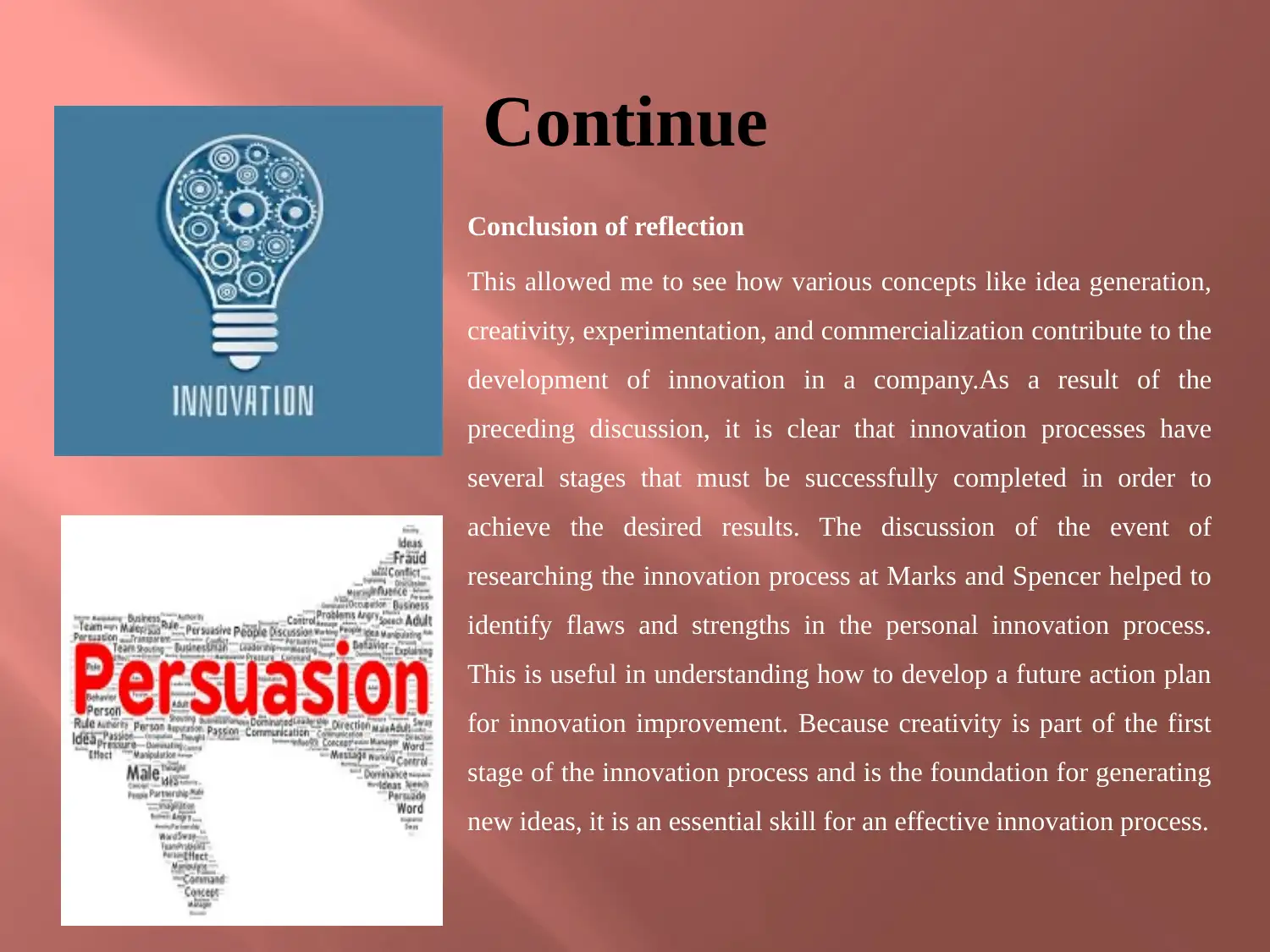
Continue
Conclusion of reflection
This allowed me to see how various concepts like idea generation,
creativity, experimentation, and commercialization contribute to the
development of innovation in a company.As a result of the
preceding discussion, it is clear that innovation processes have
several stages that must be successfully completed in order to
achieve the desired results. The discussion of the event of
researching the innovation process at Marks and Spencer helped to
identify flaws and strengths in the personal innovation process.
This is useful in understanding how to develop a future action plan
for innovation improvement. Because creativity is part of the first
stage of the innovation process and is the foundation for generating
new ideas, it is an essential skill for an effective innovation process.
Conclusion of reflection
This allowed me to see how various concepts like idea generation,
creativity, experimentation, and commercialization contribute to the
development of innovation in a company.As a result of the
preceding discussion, it is clear that innovation processes have
several stages that must be successfully completed in order to
achieve the desired results. The discussion of the event of
researching the innovation process at Marks and Spencer helped to
identify flaws and strengths in the personal innovation process.
This is useful in understanding how to develop a future action plan
for innovation improvement. Because creativity is part of the first
stage of the innovation process and is the foundation for generating
new ideas, it is an essential skill for an effective innovation process.
Paraphrase This Document
Need a fresh take? Get an instant paraphrase of this document with our AI Paraphraser
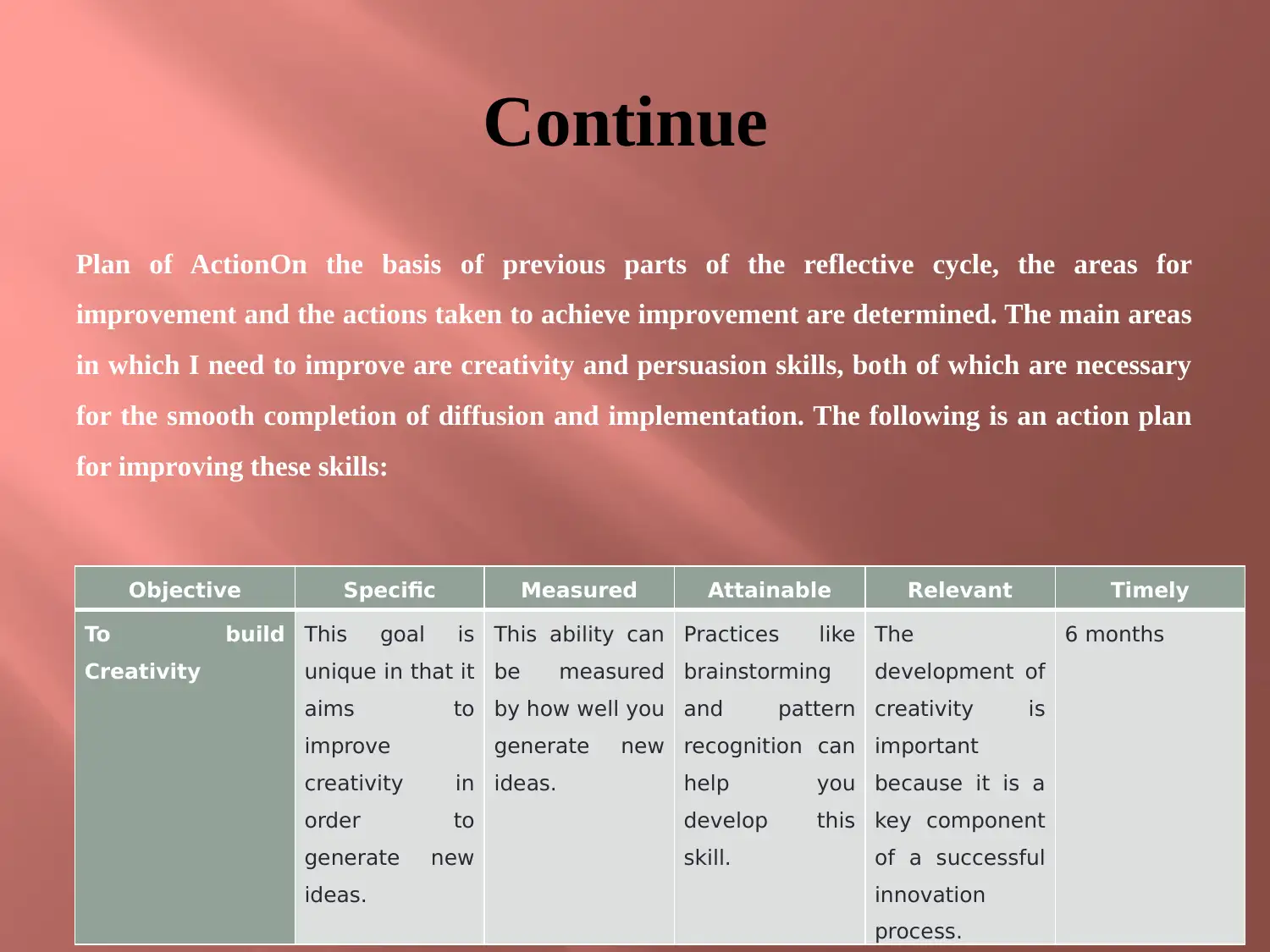
Continue
Plan of ActionOn the basis of previous parts of the reflective cycle, the areas for
improvement and the actions taken to achieve improvement are determined. The main areas
in which I need to improve are creativity and persuasion skills, both of which are necessary
for the smooth completion of diffusion and implementation. The following is an action plan
for improving these skills:
Objective Specific Measured Attainable Relevant Timely
To build
Creativity
This goal is
unique in that it
aims to
improve
creativity in
order to
generate new
ideas.
This ability can
be measured
by how well you
generate new
ideas.
Practices like
brainstorming
and pattern
recognition can
help you
develop this
skill.
The
development of
creativity is
important
because it is a
key component
of a successful
innovation
process.
6 months
Plan of ActionOn the basis of previous parts of the reflective cycle, the areas for
improvement and the actions taken to achieve improvement are determined. The main areas
in which I need to improve are creativity and persuasion skills, both of which are necessary
for the smooth completion of diffusion and implementation. The following is an action plan
for improving these skills:
Objective Specific Measured Attainable Relevant Timely
To build
Creativity
This goal is
unique in that it
aims to
improve
creativity in
order to
generate new
ideas.
This ability can
be measured
by how well you
generate new
ideas.
Practices like
brainstorming
and pattern
recognition can
help you
develop this
skill.
The
development of
creativity is
important
because it is a
key component
of a successful
innovation
process.
6 months
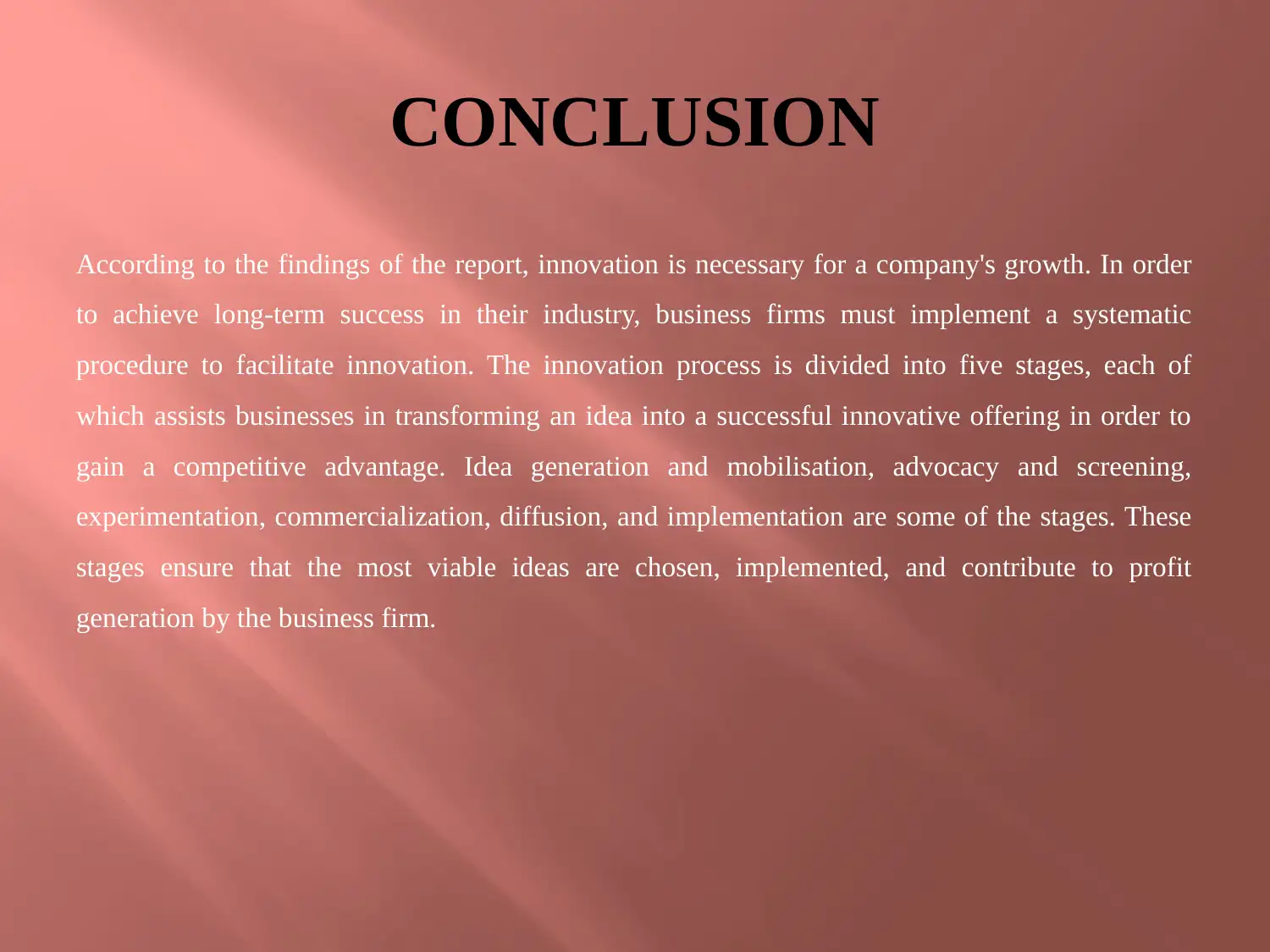
CONCLUSION
According to the findings of the report, innovation is necessary for a company's growth. In order
to achieve long-term success in their industry, business firms must implement a systematic
procedure to facilitate innovation. The innovation process is divided into five stages, each of
which assists businesses in transforming an idea into a successful innovative offering in order to
gain a competitive advantage. Idea generation and mobilisation, advocacy and screening,
experimentation, commercialization, diffusion, and implementation are some of the stages. These
stages ensure that the most viable ideas are chosen, implemented, and contribute to profit
generation by the business firm.
According to the findings of the report, innovation is necessary for a company's growth. In order
to achieve long-term success in their industry, business firms must implement a systematic
procedure to facilitate innovation. The innovation process is divided into five stages, each of
which assists businesses in transforming an idea into a successful innovative offering in order to
gain a competitive advantage. Idea generation and mobilisation, advocacy and screening,
experimentation, commercialization, diffusion, and implementation are some of the stages. These
stages ensure that the most viable ideas are chosen, implemented, and contribute to profit
generation by the business firm.
⊘ This is a preview!⊘
Do you want full access?
Subscribe today to unlock all pages.

Trusted by 1+ million students worldwide
1 out of 13
Related Documents
Your All-in-One AI-Powered Toolkit for Academic Success.
+13062052269
info@desklib.com
Available 24*7 on WhatsApp / Email
![[object Object]](/_next/static/media/star-bottom.7253800d.svg)
Unlock your academic potential
Copyright © 2020–2025 A2Z Services. All Rights Reserved. Developed and managed by ZUCOL.





